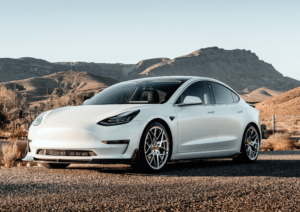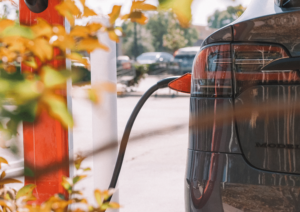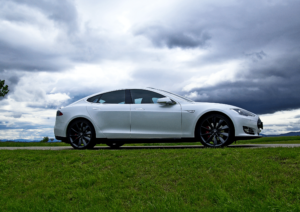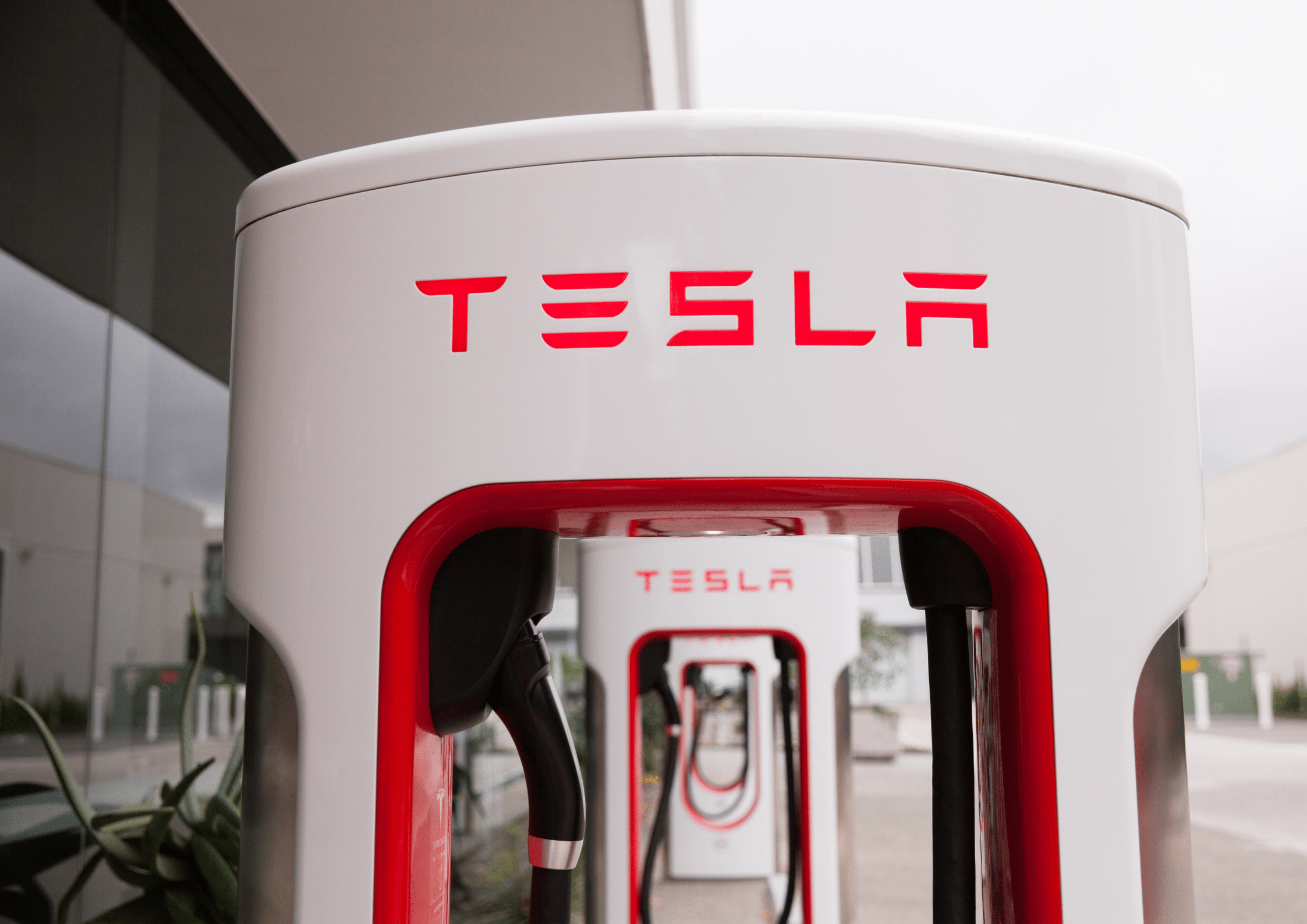Electric vehicles are almost certainly a disruptive technology. They’re almost certainly a technology that will, with time, become dominant over their predecessor. In this case, the predecessor is the internal combustion car that you, yourself, almost certainly use. Chances are, though, when asked, you’d say that your next car will not be electric, and you’re right—the average consumer, according to surveys, would not even consider purchasing an electric vehicle, demonstrating that the technology is not yet at that tipping point where it’s on a certain path towards market dominance.

But again, that path is almost certain. EVs are not there yet—right now, they’re too expensive, too short range, and too slow to charge—but they’re close. In fact, research can quantify just how close they are. It’s been shown that the “tipping point price” for EVs, the price that will lead to mainstream adoption and eventual disruption, is $36,000. Taking a look at the prices of the base models of three of the world’s bestselling electric vehicles, they’re already roughly there, so we know that that’s not what’s holding mass-market consumers back. What also matters is range.
Consumers say they need 291 miles or 469 kilometers of it before the cars can go mass-market. Two of those best-selling EVs, the Tesla Model 3 and Chevy Volt EV, are not far from that, while the Nissan LEAF lags behind. Range and cost are closely linked, and you can essentially trade one-off for the other, as the battery is the single largest cost of an EV. That’s why the industry is so focused on innovating and scaling to lower the component cost of EV batteries, and it’s working. In 2013, the average price per kWh of an EV battery was $668, meaning the base-model Tesla Model 3’s 50 kWh battery would cost $22,400—2/3rds of what the vehicle sells for.
Nowadays, the average price per kWh is all the way down to $137, meaning that the same battery pack would cost just $6,850, and this price per kWh is expected to lower to $100 by 2023. It’s getting more and more possible for manufacturers to sell an EV for the magic $36,000 price with the magic 291-mile range. While EVs are not quite there yet, they’re really not far and will be there in the next

few years. So, the range is not what’s significantly holding mass-market consumers back, and it won’t be at all within a few years. What is, though, is charging. The research shows that consumers want to be able to charge their cars from empty to full in 31 minutes, and that’s the magic number for mass-market adoption. With this, the current $36,000 EVs just aren’t yet there.
The base model Chevy Volt EV can’t even fast-charge, it doesn’t have the technology for it, and even the upgraded, more expensive model that does allow for fast-charging can only get to 39% state of charge in 31 minutes. The Nissan LEAF does a little better, attaining 62% state of charge in 31 minutes, while the base-model Tesla Model 3 does the best, with its ability to fill its battery to 83% in the ideal conditions using the fastest models of Tesla Superchargers, but that would only give it 196 miles or 315 kilometers of range, again in the ideal conditions. In colder weather, both that charging time would be greater and that range would be less. So, it’s currently possible to get an EV with just about what the mass market requires for cost and range, but reaching that charging time—that’s just a lot tougher. What this research can lead us to conclude is that the largest barrier right now to mass-market EV adoption is, in fact, the charging problem.
The tipping point just will not happen without widespread fast charging, but widespread fast charging is just difficult because of the very way our electric grid works. You see, back in the 1880s, Thomas Edison, with his direct current electric system, battled it out with George Westinghouse and his alternating current system. As the names suggest, direct current electricity flows consistently and unidirectionally, while alternating current oscillates in magnitude and rapidly changes direction.

The exact details of how each work isn’t that important in this context, but what it is to know that, for a variety of reasons, AC power won; it’s now the standard for power grids, but there are certain technologies that still need DC power. The most widespread example of that is batteries—you cannot charge a battery using AC power. That’s why you don’t plug your smartphone directly into an outlet—you plug it into a power brick that plugs into an outlet, and that power brick is an AC to DC inverter. A standard iPhone charging inverter outputs 5 watts of electricity, which is plenty enough to charge the phone’s 11-watt hour battery in a few hours. A base-model Tesla Model 3, meanwhile, has a 50-kilowatt hour battery—4,500 times larger.
Therefore, it needs a much higher wattage power inverter to charge at any speed. It solves this in two ways. Onboard that Model 3, there’s a 7.7 kW inverter that can take AC power from common sources, like a standard wall outlet, and convert it into DC power to charge the battery. At its max rate, this can charge the car fully in under ten hours and has the advantage of allowing consumers to charge using regular wall plugs or by installing relatively inexpensive chargers on existing domestic AC electric circuits.
The disadvantage, though, is that while 7.7 kW is plenty fast enough for regular, overnight, at-home charging, it’s not fast enough to compete with the convenience of filling up an internal combustion car at the gas station. It’s not fast enough if you’re on a long-distance trip and need to be able to gain hundreds of miles of range in a matter of minutes. So, if you need more electricity faster, you need a higher wattage inverter. To be able to take a Tesla Model 3 from almost empty to almost full in thirty minutes, you want between 120 and 250 kW.
The problem, though, is that a 250 kW inverter costs, at least, in this case, $57,600 and is about the size of a very large fridge—it’s not exactly practical to have this as an internal component of the car. So, for faster charging, one needs to offboard the inversion process. That’s exactly what a DC-fast charger does—it supplies a huge quantity of DC power to the car, which bypasses the onboard inverter and charges the battery directly. Between the inverter, the charger, and all the other equipment needed for a fast-charging station, the cost and size are not insignificant.
One of the more popular models, the ChargePoint Express 250, which can charge a single car at a somewhat slow 62.5 kW, sells for $40,800, and that’s before installation. Meanwhile, while it’s tough to get an exact figure, industry experts estimate it costs Tesla about $250,000 to build an average Supercharging station with 6-8 stalls delivering 120 to 150 kW each, while its closest equivalent, the stations by Volkswagen’s Electrify America, are estimated to cost $350,000. But here’s something counterintuitive: using a 250-kW charger versus a 150 kW one doesn’t really impact how fast you charge. Batteries charge slower the fuller they are, so the first 20% will pass far faster than the last 20%.

In the context of EV charging, this means that quite quickly into the charge, the speed is impacted not by how much power the station is putting out but by how much electricity the battery can accept. So, it’s actually faster to charge to 50%, drive until empty, charge to 50%, and drive until empty again than charging to 100% and driving to empty.
A Tesla Model 3 can go from zero to 50% charge in 15 minutes on a 250-kW charger and 17 minutes on a 150-kW charger
giving it enough range to drive at least 100 miles or 160 kilometers—while charging from 50% to 90% would take an additional 27 minutes in both cases.
So, combining two charges from empty to 50%, in two stops, you could effectively reach the tipping point speed of 100% charge in 31 minutes with existing 250 kW chargers. Therefore, what the industry needs is not faster chargers but more chargers, which is hugely difficult given the enormous cost of fast chargers. The average American lives four minutes away from a gas station. Meanwhile, the same average American lives 31 minutes away from their nearest Tesla Supercharger. Currently, there are 976 supercharging stations in the US—each of which has anywhere between two and 56 individual chargers. In order to match the four-minute average of gas stations, Tesla would need to build an additional 31,251 Supercharging stations. At their $250,000 per station cost, that would cost the company some $7.8 billion, or roughly ten times their total annual profits from 2020.

